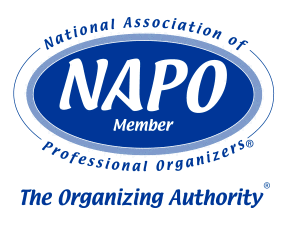(What’s wrong with this puzzle picture?)
I frequently work with clients on their time management challenges. I remind them that “time management” is really just a balance between what we need to get done and the time in which we have to do it.
Efficient time management really boils down to a few simple processes:
Think: Devote time to thinking about what really needs to get done and by when. To do this, I suggest implementing the following processes:
- Create a list. Take a few (or a lot) of minutes to do a brain dump of everything that needs to be done. It doesn’t matter if the repository is paper or electronic, just make sure it’s out of your head and recorded somewhere. I also ask my clients to estimate how long each item will take them to complete.
- Determine what needs to be done and group those things together: phone calls, items requiring a computer, errands that require transportation, things that can be delegated, etc. Just like organizing physical items “like with like,” grouping action items is equally as efficient.
- Prioritize items within categories. Doing this will help you determine when they need to be fit into your schedule (high, medium, low or by due date).
Plan: Now that you have a list of things that needs to get done, where they need to get done, and when they need to get done by, the next step is to put a plan together to get them done.
It’s critical to set aside time to work through your list. Even five-minute tasks need to have dedicated time for them to get accomplished. Make and keep an appointment with yourself to work through your list. I suggest setting a Time Timer and eliminate distractions just as if you were having a meeting with a client.
Different actions require differently planning processes. For example:
- “Create mission statement” may be something that can be done at any time and almost any where, but time to complete the process still needs to be slotted into your schedule.
- “Complete taxes” is something that really needs to be done by April 15. This type of item, and the specific tasks that need to be done to accomplish “complete taxes,” need to be scheduled with more critical thinking.
- “Grocery shopping” may be a recurring weekly task, but still needs to be slotted into your schedule before you run out of milk.
Also think about items that you can do outside your office or home and take supplies with you. For example, you can make dentist appointments while you are waiting to pick up your children from school or you can text the babysitter while you are waiting in line at the post office.
Act: Now that you are done thinking through your plan, your next step is to act.
According to Elbert Hubbard “Self-discipline is the ability to make yourself do what you should do, when you should do it, whether you feel like it or not.” Self-discipline is sometimes hard, but focusing on the right thing, at the right time, in the right place, will make you incredibly more productive and efficient.
Cindy Jobs




